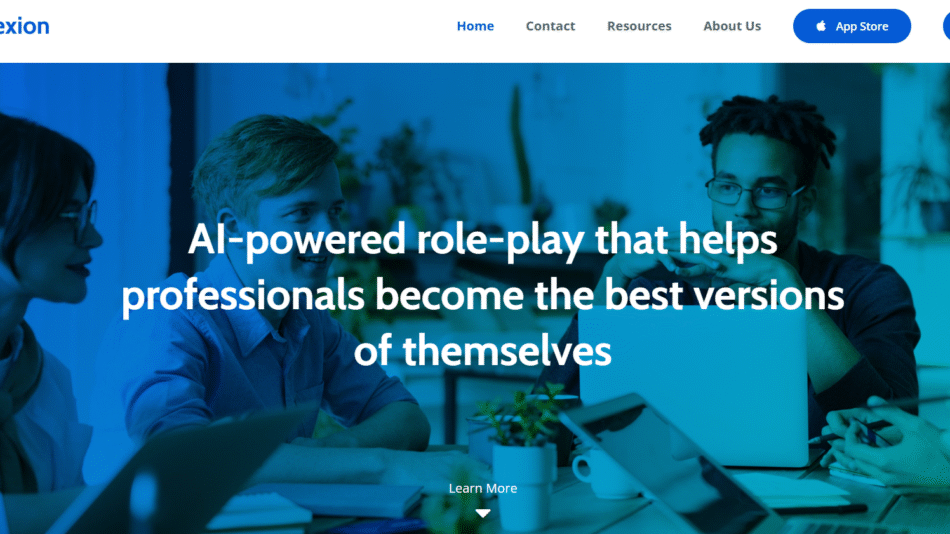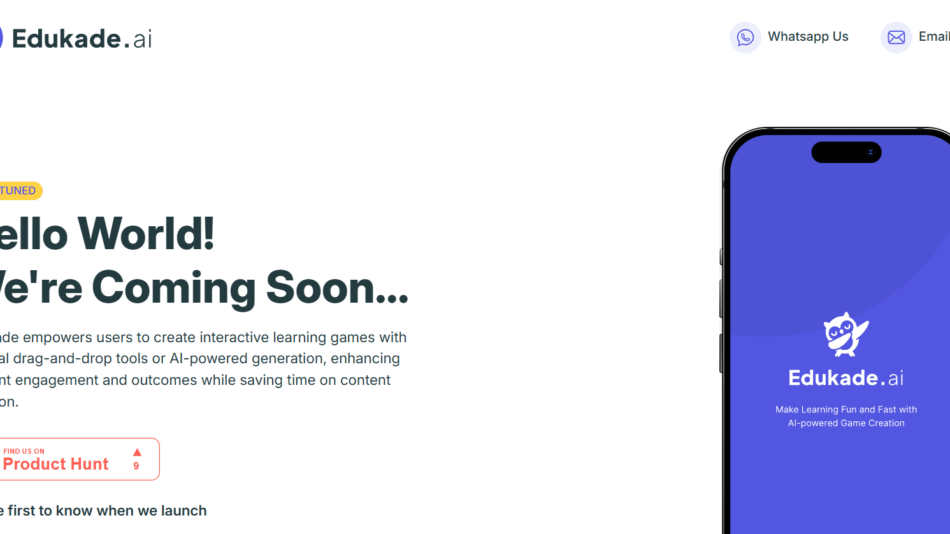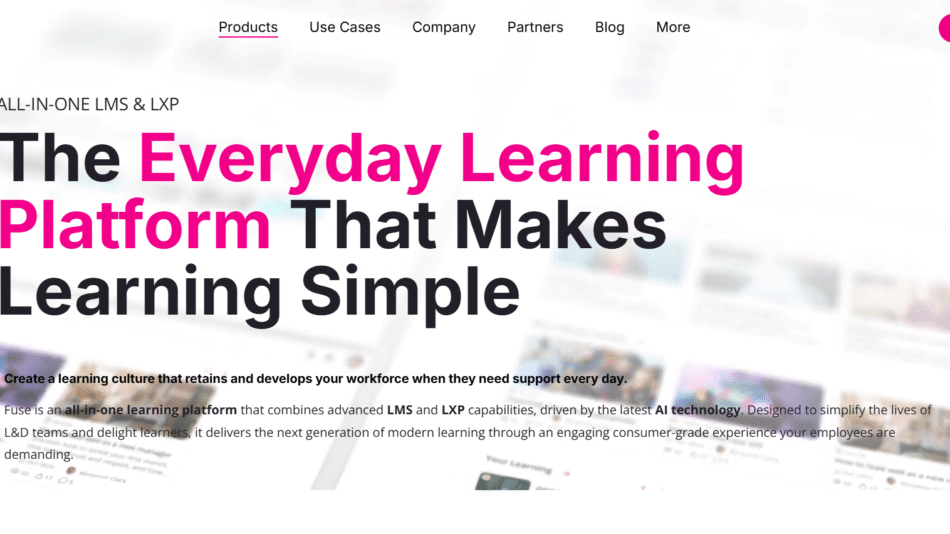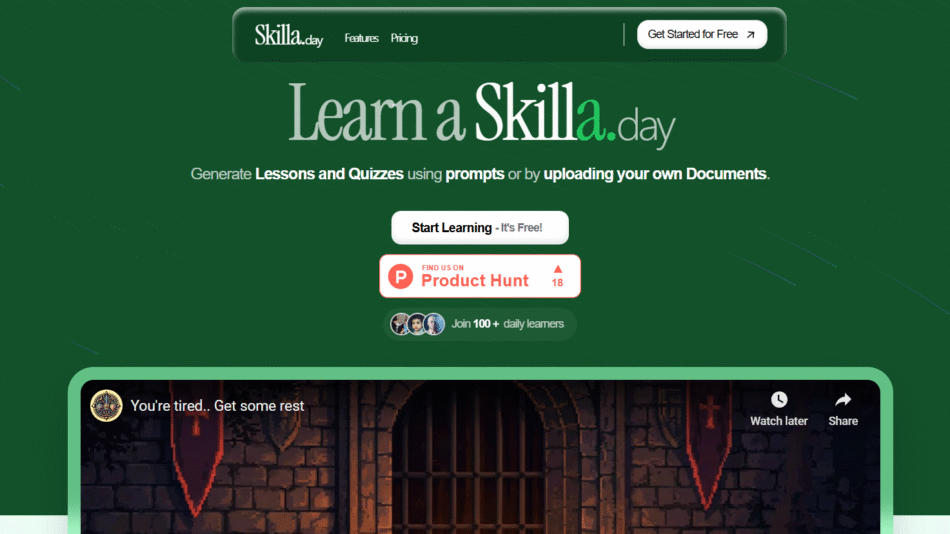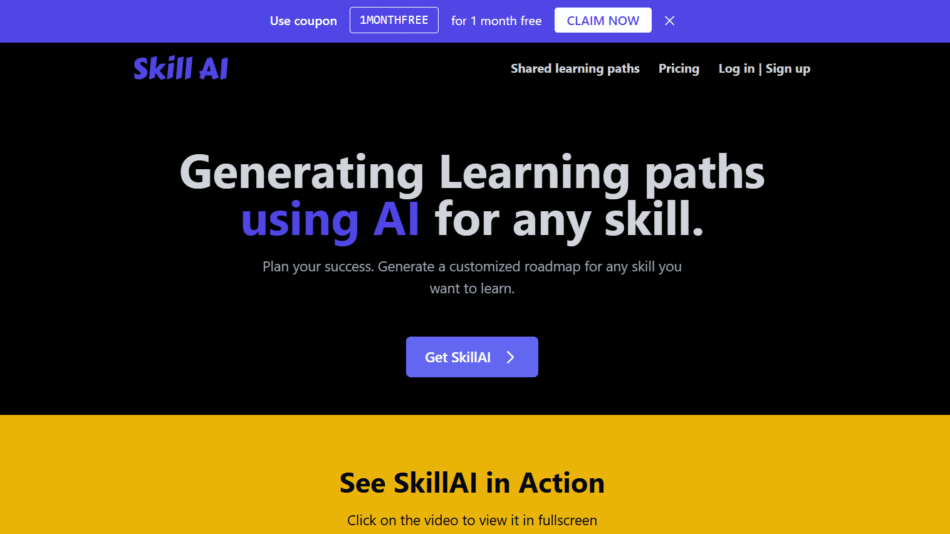CPLX AI is a no-code platform for building and deploying AI agents by writing logic in natural language instead of programming languages. It enables users to define how agents should behave, respond, and reason using plain English, then test and refine those behaviors in real time.
The platform is designed to empower teams to build intelligent systems without needing deep technical expertise or extensive fine-tuning. CPLX agents are built as reusable components and can be tested directly in the browser, integrated into workflows, or deployed as back-end logic.
From customer support bots and internal assistants to intelligent decision engines, CPLX makes AI agent creation more modular, explainable, and scalable.
Features
Natural Language Programming: Define agent logic in clear, readable English—no syntax, functions, or loops required.
No-Code Agent Builder: Create, organize, and test AI agents in a clean, browser-based interface.
Multi-Agent Architecture: Build modular agents that communicate, coordinate, or delegate tasks between each other.
Live Testing: Interact with agents in real time and see how logic flows based on your input.
Reusable Components: Design agents as blocks that can be reused across different applications or workflows.
Explainable Logic: Every action taken by an agent is traceable and transparent—ideal for debugging and auditing.
Team Collaboration: Invite team members to contribute to logic, test agents, and review performance in a shared workspace.
Rapid Iteration: Update agent behavior instantly and test without redeploying or writing code.
How It Works
CPLX AI reimagines the development of AI agents by turning natural language into functional logic. Here’s how the platform works:
Create a Project: Start with a blank agent or use a template.
Define Logic in English: Write rules like “If the user asks for pricing, provide the pricing page URL” or “If the customer is angry, escalate to a human agent.”
Test in Real Time: Use the built-in simulator to chat with your agent and observe how it behaves.
Chain or Combine Agents: Connect multiple agents together to build layered workflows or modular functions.
Deploy: Export agents into applications, back-end processes, or user-facing tools.
This process allows users to focus on what the agent should do, not how to code it.
Use Cases
CPLX AI supports a wide variety of applications across industries:
Customer Support: Build intelligent support agents that can triage requests, route tickets, or answer FAQs.
Internal Tools: Create workplace assistants that can fetch data, summarize documents, or guide employee workflows.
Decision Automation: Build agents that reason through complex conditions to suggest or make decisions.
Conversational Interfaces: Design chat-based agents for websites, mobile apps, or Slack that understand logic and intent.
Product Prototyping: Rapidly test AI-driven features or ideas before committing to full development.
Research Assistants: Build agents that analyze and summarize papers, extract key information, or assist in data queries.
Pricing
As of the latest information available on the CPLX AI website, pricing details are not publicly listed, indicating that the platform may currently be in an invite-only or beta phase.
Expected pricing tiers (based on market trends) may include:
Free Plan – Limited agents, basic features, personal use
Pro Plan – Extended usage, agent export, priority support
Team/Enterprise Plan – Collaboration tools, API access, advanced features, and security
To access CPLX AI, users are encouraged to join the waitlist or request early access via the official website.
Strengths
Natural Language First: Empowers non-engineers to define and test logic without code.
Modular Agent Design: Encourages reusable, composable logic blocks.
Real-Time Feedback: Built-in testing speeds up development cycles.
Transparency: Agent decisions are explainable—ideal for audits and refining behavior.
Collaborative Workflow: Designed for teams building together.
Flexible Applications: Can be used for internal tools, user-facing assistants, automation, and more.
Drawbacks
Early Access: Currently not open to the public; access requires sign-up or approval.
No Public Pricing: Lack of pricing transparency may delay adoption decisions for businesses.
Requires Strategic Design: While no-code, effective agents still require clear thinking and logic mapping.
Limited Third-Party Integrations (Currently): No mention of out-of-the-box integrations with popular tools or APIs.
No Mobile App: Currently web-based with no dedicated mobile experience.
Comparison with Other Tools
CPLX AI fits into a growing space of tools focused on agent-based AI development. Compared to traditional platforms like Dialogflow, Rasa, or LangChain, CPLX offers a more human-readable, logic-first approach.
LangChain focuses on chaining prompts and models with coding.
Dialogflow is powerful but requires understanding of intents, entities, and sometimes coding.
CPLX AI stands out by focusing on plain English logic, modularity, and team collaboration, making it especially appealing to startups, product managers, and non-technical builders.
Customer Reviews and Testimonials
As of now, CPLX AI does not display public reviews on third-party platforms like G2, Capterra, or Product Hunt. However, early adopters in developer communities and Twitter circles have expressed excitement about:
The speed of testing logic
Its accessibility for non-developers
The power of chaining multiple intelligent agents
As the platform becomes more widely available, more structured user feedback is expected to emerge.
Conclusion
CPLX AI offers a groundbreaking approach to AI agent development—putting the power of intelligent automation in the hands of anyone who can think in logic and write in plain English. By replacing code with natural language and focusing on real-time testing and modularity, it significantly lowers the barrier to building smart, usable agents.
Whether you’re designing an AI assistant, building a new product feature, or exploring automation in your team, CPLX AI is a tool to watch—and one that could shape the next era of AI development.

